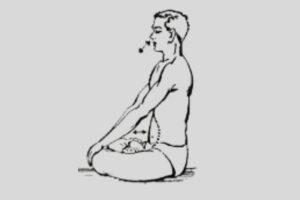Prana is energy, power, vitality. Prana is the foundation and essence of all life; the vitality and energy that permeates the entire Universe. Prana flows in everything that exists.
Five types of Prana, collectively known as the five vāyus (“winds”), are described in Hindu texts. Ayurveda, tantra, and Tibetan medicine all describe Prana Vayu as the basic vāyu from which the other vāyus arise.
Prana is divided into 10 main functions
The 5 Pranas – Prana, Apana, Udana, Samana and Vyana
The 5 Upa-Pranas – Naga, Devadatta, Kurma, Krikala and Dhananjaya.
The Five Pranas
Prana (Head, heart, lungs ): Movement is inward and downward, the vital life force. Balanced prāṇa leads to a balanced and calm mind and emotions.
Apana( Lower tummy): Movement is outward and over, it’s related to processes of elimination, reduplication, and cadaverous health( immersion of nutrients). Balanced apāna leads to a healthy digestive and reproductive system.
Udana( Throat, Diaphragm): Movement is overhead, it’s related to the respiratory functions, speech, and functioning of the brain. Balanced udāna leads to a healthy respiratory system, clarity of speech, healthy mind, good memory, creativity, etc.
Samāna( Navel) Movement is helical, concentrated around the nexus, like a churning stir, it’s related to digestion in all situations. Balanced samāna leads to a healthy metabolism.
Vyana ( Originating from the heart, distributed throughout): Movement is outward, like the circulatory process. It’s related to the circulatory system, nervous system, and cardiac system. Balanced vyāna leads to a healthy heart, rotation, and balanced jitters.
The Five Upa-Pranas
Naga – Burping
Removes blockages of Prana and Apana and prevents gas conformation in the digestive system. Constant repression of Naga can lead to Cardiac Arrhythmia. Other functions include driving the heave kickback due to indigestion and dissolving blockages of Samana Prana.
KURMA – Blinking
This Upa- Prana functions in the area of the eyes, controlling the opening and end of the eyelids. The energy of this Upa- Prana is active when we’re awake and revitalized when we sleep. Kurma protects the eyes from the penetration of dust and foreign bodies etc. Disturbance of this Upa- Prana causes unbridled blinking and shuddering of the eyelids. The practice of Trataka provides balance and strength to Kurma, as does the chanting of OM, placing warm triumphs over the eyes and Asanas where the head is fraudulent forward.
DEVADATTA – Yawning
The function of Devadatta is analogous to that of Samana Prana. Yawning expels gas, reducing frazzle after eating. Certain foods similar as grains, onions, and garlic beget fatigue. numerous Yogis only eat vegetables and some milk products in order to sustain their position of vitality and thereby reduce languor.
KRIKALA – Sneezing
Clears blockages in the respiratory system. Sneezing can also ease headaches as it releases energy blockages in the head and neck. A sneeze shouldn’t be suppressed, as this may affect chines in the cervical chine. In folk tales, it’s said that he who sneezes loudly and explosively, has a long life. Weak sneezes indicate weak vitality.
DHANANJAYA – Opening and ending of Heart Valves
Dhananjaya resides close to the Heart. It influences the whole body and in particular the muscles of the heart by opening and closing the heart faucets. Cardiac Arrhythmia and indeed Heart Attack may do due to a serious disturbance of Dhananjaya.
There are four areas in the mortal body where the inflow of Prana is particularly ferocious – through the sole of each bottom and the win of each hand. The bases are nearly related to the earth element and represent negative opposition. thus one should noway concentrate on the bases in contemplation. Again, the energy of the triumphs originates from the heart. It’s related to the air element and produces positive opposition.
Yoga in Rishikesh – Best Yoga School in Rishikesh – 200 Hour Yoga Teacher Training in Rishikesh




